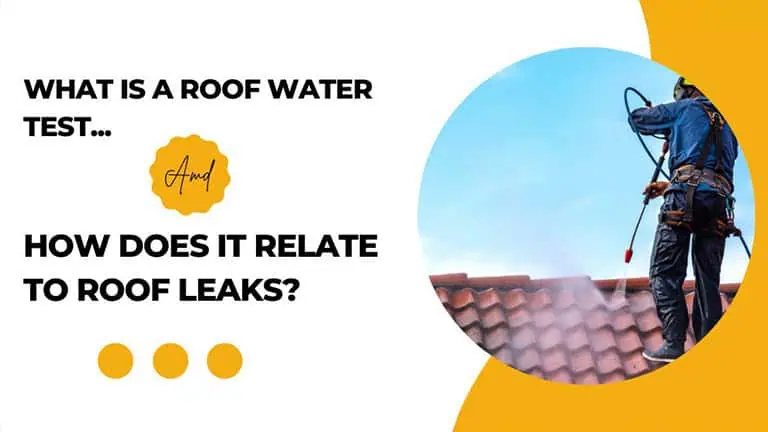
Fire-resistant roofing materials are designed to withstand flame and heat but not completely stop them. They’re used in places with a high risk of wildfire, including large cities with many wooden structures that could easily catch fire.
In addition to protecting buildings from damage, fire, and smoke, these materials can also reduce your insurance premiums by reducing the amount of damage caused by flames or heat compared with traditional roofs that aren’t fire-resistant.
Some types of roofing materials can even save lives because they provide more oxygen flow through buildings during an emergency when people need more oxygen faster than usual (such as after an earthquake).
The Purpose of Roofing and the Importance of Quality Roofing Materials
Roofing is a significant part of any building. It protects your home from elements, fire, and water damage.
The purpose of roofing materials is to reduce heat loss through conduction and convection and to protect against rain penetration by trapping water molecules in a layer between the surface layers of shingles or tile.
Insulation (for a roof) is a material that is used to reduce heat flow. It can be found in various materials; fiberglass is the most common type of insulation.
The most common type of roofing material is asphalt shingles. There are many other types of roofing materials, such as slate tiles, clay tiles, and concrete tiles.
Different roofing materials are better for different climates. For example, concrete tiles are best for regions with high humidity, and clay tiles for areas with low humidity.
Choose the Right Fire-Resistant Material for Your Roof
The first step to choosing a fire-resistant roofing material is identifying what kind of roofing material is appropriate for your home. In some cases, there are variances in how each type of material reacts to fire. For example:
Asphalt Shingles
These can trap heat and burn hotter than other materials because they contain many petroleum products (such as asphalt). This makes them more likely to ignite during an emergency.
Metal Shingles
Metal roofs do not tend to burn as hot as asphalt, but they also don’t offer much protection against heat-related damage such as creosote buildup or cracking due to high temperatures during an emergency.
The best way to find out what kind of roofing material is most appropriate for your home in your area is by visiting a fire-resistant roofing supplier.
Fire Ratings for Roofing Materials
The National Fire Protection Association (NFPA) is the organization that sets and publishes standards for fire-resistant materials. They have developed a classification system that assigns a letter to each material based on its ability to resist fire.
The NFPA has three classes: A, B, and C. Each class is assigned a letter from A-C, with A being the most resistant to fires and C being the least resistant to fire.
For many years, the building industry has been searching for a single measure that can be used to determine which materials are the most fire safe. This is because many different materials can be used to construct roofs.
ASTM International has developed a new standard for fire ratings on roofing materials. This standard is called ASTM E84 and provides an easy way to compare the relative safety of different roofing materials during a fire.
Fire ratings are based on the time it takes for a roof to burn through. The most common rating is ASTM E108, used for commercial buildings. This standard only applies to roofs with a thickness of at least 2 inches and fire-resistant cladding in direct contact with the building’s exterior walls (known as “face sheeting”).
Furthermore, to the types above, there are also other types of standards that you can use depending on your situation:
ASTM E84
It is based on four tests: 1) Smoke Density and Flame Spread Index; 2) Heat Release Rate; 3) Peak Heat Flux, and 4) Thermal Response Time. These tests measure how quickly and intensely heat will spread through a material when exposed to a flame.
ASTM E119 (Fire Resistance Specifications for Plastic Extrusions)
Plastic extrusion systems, including steel I-beam connectors and concrete forms; are used when you need an extra level of protection for your home’s structure from fire damage due to plastics being highly flammable materials; not suitable for residential use since it requires large amounts of material which may not be cost-effective if installed yourself due its complexity relative against other options available today! ASTM E119 is not suitable for residential buildings.
Types of Fire Protection Systems for Roofs
When it comes to choosing fire-resistant materials, there are many options. Class A is the most popular type of roofing material used in the United States, which has a flame spread index (FSI) rating of 0-10.
Class B roofs have an FSI between 10 and 30. They’re still very safe and will protect your home from fire if any damage from an external source such as lighting or cooking grease drips onto the surface of your roof.
The least common fire protection system you can use in your home is “Class C” or “B1.” These systems are designed to resist fires and provide heat resistance protection against radiant heat sources. So you’ll be able to enjoy your backyard without worrying about losing all those precious summer days away!
So, now the question is:
Which Class is Better for a Roof?
Class A is the most common fire protection system used in homes. It’s a highly effective system that provides excellent protection against interior and exterior fires and radiant heat sources like sunlight during solar flares.
Class B is another popular choice for residential use; it’s a great option if you’re looking for an FSI between 10 and 30.
If you live in an area with a high wildfire risk or have buildings in the surrounding, choose fire-resistant roofing materials.
Fire-resistant roofing materials are most commonly made from asphalt or concrete. Asphalt shingles are typically used for residential construction, while asbestos-cement siding is often seen in commercial buildings. Regardless of the form it takes, fire-resistant roofing material must meet a certain level of protection before being considered adequate for your needs.
Fire resistance is measured by time: how long does it take for a given material to ignite and self-extinguish? The higher this number is compared to other materials—and therefore, the more fire resistant they are—the better they’ll protect you from potential fires that may occur during use.
If you live in a region prone to wildfires or if you’re building structures with a high risk of catching fire, the best approach is to choose a fire-resistant roofing material. However, this won’t protect your home from other types of damage—such as wind and hail storms—so it’s important to consider all factors when selecting products.
Prevention Tips to Keep Your House and Buildings Safe from Fires
Fires are one of the most common disasters in the home. Most people will never have a house fire, but it is important to know how to reduce the risk of a house fire. Prevention tips include:
- Preventing smoking inside the home
- Implementing open flame detectors
- Turn on your smoke detectors every time you leave your home
The Surprising Truths of Tile Roofs
There is a common misconception that tile roofs are more expensive than other roofing materials. In reality, tile roofs are more affordable than most other roofs. Tile roofs are also easier to maintain and can last for decades.
Tile roofs are not only cheaper than most types of roofing, but they also last longer than other types. You can install Tile roofs in various colors and styles to suit your specific needs.
Conclusion: Find a Quality Supplier of Fire-Resistant Roofing Material
It’s vital to choose a roofing material that is the right choice for your home and the environment in which you live. There are several types of fire-resistance ratings (FRR) available. We recommend using one appropriate for your region so that it wouldn’t spread and cause damage beyond repair.
Contact us if you want to discover more about the different fire-resistant materials available today and how they work!
Statewide Roofing Experts are licensed and certified roofing services providers in North Carolina, US. Our outstanding services include:
- Roof Installation
- Roof Replacement
- Roof Inspection
- Roof Maintenance
- Roof Repair
- Roof Insurance Claims
- Roof Finance
- Fire-Resistant Roofing Materials
And many more related ones. So, if your roof is troubling you, give us a call at (336) 480-1824.



